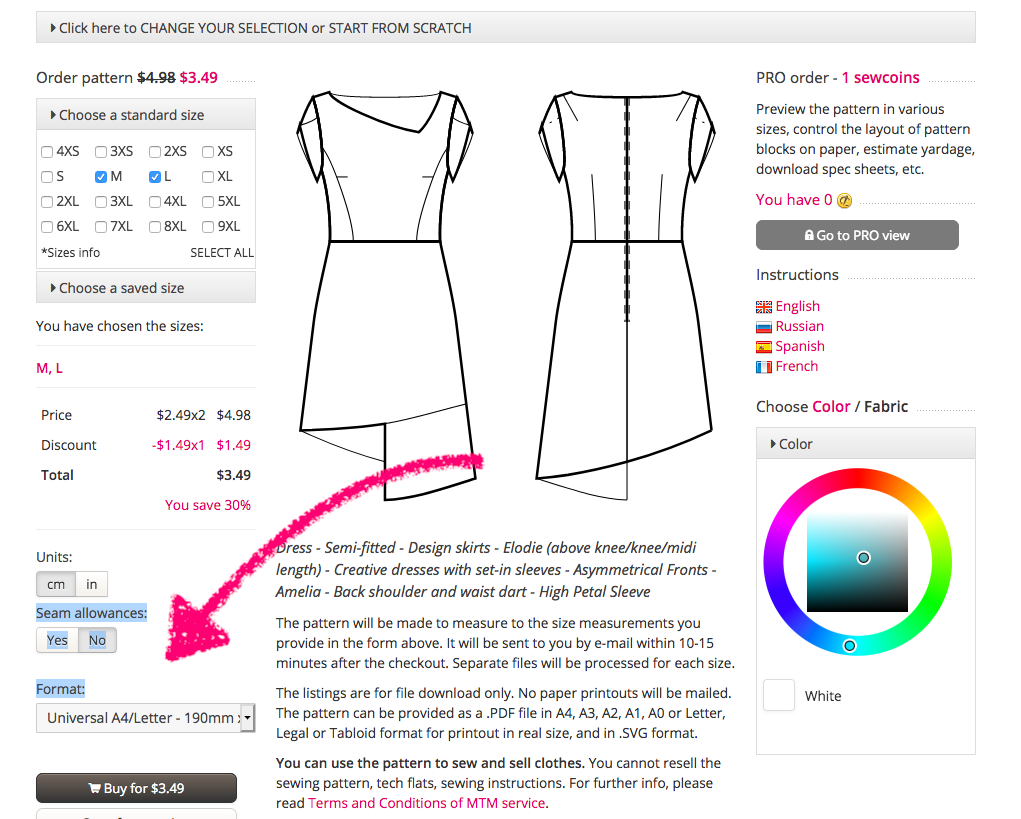Adding seam allowances to your sewing pattern
When ordering a pattern, you have the option to choose whether you want it with or without seam allowances. Seam allowances are the extra fabric around the edges of the sewing pattern pieces that allow for sewing and finishing the garment.
It's important to note that the seam allowances cannot be changed and are already set in the system. By default, the seam allowances are 3/8 inches wide. However, along the shoulders, side seams, and center back seams, the seam allowances are 5/8 inches wide. This slightly larger allowance of 5/8 inches allows for adjustments and fitting if needed, providing some flexibility during the construction process.
Along the hem of the garment, the seam allowance is 1 inch wide. This wider allowance is specifically intended for hemming the lower edge of the garment. It provides ample fabric to create a neat and clean hem that adds a polished finish to your completed garment.
Regardless of whether you choose a pattern with or without seam allowances, the price remains the same.
When considering the seam allowances provided with the sewing patterns, it's worth mentioning that they may be slightly narrow for beginners. However, these smaller allowances have their advantages. They help conserve fabric and paper, as well as create a cleaner and more professional look when the seams are sewn.
If you prefer working with larger seam allowances or have specific sewing preferences, you have the option to choose a sewing pattern without seam allowances. In this case, you will receive the sewing pattern without any preset allowances, allowing you to add them directly onto the fabric before cutting out the pattern pieces. This method gives you greater control over the seam widths and ensures they align with your personal sewing techniques.
Whether you decide to use the provided seam allowances or add them yourself, it's important to follow the sewing pattern's instructions and guidelines for accurate and successful garment construction. Experiment with different techniques and find what works best for you as you gain experience and confidence in your sewing skills.
